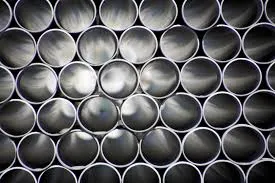frp flange and blind
Understanding FRP Flanges and Blinds Applications and Benefits
Fiber Reinforced Polymer (FRP) has emerged as a revolutionary material in industrial applications, particularly in environments where traditional materials, such as metals, may falter due to corrosion or degradation. Among the various components crafted from FRP, flanges and blinds play a critical role in ensuring that systems are not only efficient but also durable. This article delves into the significance of FRP flanges and blinds, their applications, and the advantages they confer in modern engineering.
What are FRP Flanges and Blinds?
FRP flanges are specialized connectors used to join pipe sections, fittings, or other industrial components. They serve as interfaces that provide both structural integrity and the capacity to create secure, leak-proof connections. FRP blinds, on the other hand, are solid plates or covers used to block off the end of a pipe or loop in a piping system. They are crucial during maintenance operations or when a temporary closure is required. Both components are engineered to withstand various environmental stresses, making them ideal for a range of industries, including oil and gas, chemical processing, and water treatment.
Applications of FRP Flanges and Blinds
1. Chemical Processing Plants The chemical industry often utilizes aggressive substances that can corrode metals. FRP flanges and blinds offer a non-corrosive alternative, ensuring reliable and safe operations. They are capable of resisting temperatures and chemical attack, making them suitable for piping systems that transport acids, alkalis, and other reactive fluids.
2. Water and Wastewater Treatment In the treatment of water and wastewater, minimizing contamination and ensuring structural integrity is paramount. FRP products, including flanges and blinds, are often employed in these systems due to their resistance to corrosion and biological growth, thereby enhancing the efficiency of treatment processes.
3. Oil and Gas Industry The oil and gas sector frequently encounters harsh environments, with extreme temperatures and corrosive materials being common. The lightweight nature of FRP flanges and blinds not only simplifies installation but also improves safety by reducing the physical strain on workers.
4. Power Generation Power plants that utilize cooling water systems or handle by-products from energy generation benefit from the properties of FRP components. These materials are effective in mitigating scale build-up and provide long-lasting solutions for flange connections and piping configurations.
frp flange and blind

Advantages of Using FRP Flanges and Blinds
1. Corrosion Resistance The primary advantage of FRP is its innate resistance to corrosion, which dramatically extends the lifespan of piping systems and reduces maintenance requirements. This property is critical in environments where traditional materials might corrode rapidly.
2. Lightweight and Easy to Handle FRP components are significantly lighter than their metal counterparts, making them easier to transport and install. This reduces labor costs and improves the overall efficiency of installation processes.
3. Thermal Insulation FRP materials have excellent thermal insulating properties, which help maintain temperature control in piping systems. This characteristic is particularly beneficial in energy efficiency and operational safety.
4. Design Flexibility FRP can be easily molded into various shapes and sizes, allowing for customized designs that meet specific project requirements. This flexibility enhances its applicability across diverse sectors.
5. Cost-Effectiveness Although the initial investment in FRP components may be higher than traditional alternatives, the long-term savings realized through reduced maintenance, enhanced durability, and minimized downtime outweigh the upfront costs.
6. Non-Magnetic Properties FRP is non-magnetic, making it suitable for applications where electromagnetic interference may be a concern, such as in certain medical and telecommunications equipment.
Conclusion
As industries continue to prioritize safety, efficiency, and sustainability, the demand for innovative materials like FRP is poised to grow. FRP flanges and blinds are becoming indispensable components in various applications, offering a host of benefits that enhance the performance of piping systems. Their corrosion resistance, lightweight nature, and overall durability make them an ideal choice in environments where traditional materials struggle to perform. As technology advances and the production of FRP becomes more refined, we can expect to see even broader applications that will harness the full potential of this remarkable material, paving the way for safer and more efficient industrial practices.
Latest news
-
Oblate Tanks: Space-Saving, Durable Liquid Storage SolutionsNewsAug.27,2025
-
High-Performance Piping System Solutions for Industry & Commercial UseNewsAug.26,2025
-
Precision Fittings: Durable & Reliable Industrial & Plumbing SolutionsNewsAug.25,2025
-
Practical Steps: Unlock Success with Our Proven GuidesNewsAug.24,2025
-
Transport Tanks: Safe, Durable & Efficient Liquid HaulingNewsAug.23,2025
-
High-Quality Piping Systems for Efficient Flow & DurabilityNewsAug.22,2025











